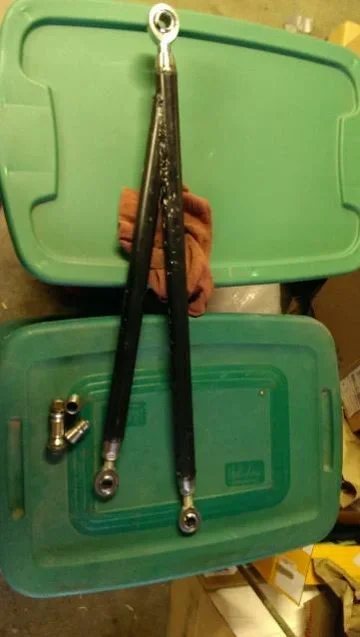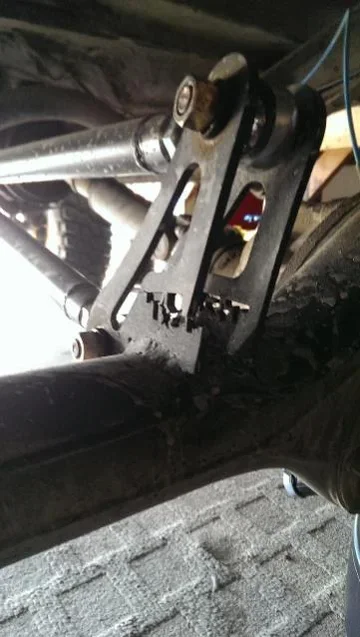The bar shown above with the shackle will lift the rear end if the weight is removed from the rear end. Jack it up from the frame and you will see. It can still articulate fine but will bind when weighting and unweighting.
Are you talking unloading due to going uphill or downhil or?? If you are talking about the habit of many A frame bars lifting the rear body on acceleration I'm still confused.
It is my opinion that the shackle should point straight back at the axle at ride height and the tip of trac bar should be able to telescope. On acceleration, the bar will tip upwards and lengthen so the tip travels around the arc dictated by the shackle. The axle will wrap some, but it will be controlled by the length of the shackle. The resulting wrap will be within the limits of the u-joint as long as the shackle isn't too long.
I would like to see this in action. It sure appears that you would floor it, and the extension would slide out till the shackle basically goes vertical. Then it would max out and suddenly you would have huge antisquat numbers making the rear of the vehicle jack on acceleration badly (and hop with hill climbs).
When you unweight the rear end, the tip of the trac bar will want to drop straight down. Decker's diagrams are correct in this regard. The bar has to be able to telescope so that it can follow the arc dictated by the shackle in the downward direction.
With stock spring geometry, the actual movement of the pinion flange is negligible. It tends to point straight ahead or rotate slightly towards the Tcase. If you flip the springs, then things change, but 99% of the movement is straight up and down (with some forward and backwards).
Since the tip of the bar floats inside the main bar it can be a bushing. The whole tip rotates within the body of the bar.
The more I argue about this, the more I'm sure I'm right. I should get a patent.
I'd take your truck to a block wall and video what happens in 2WD with the front tires blocked..




